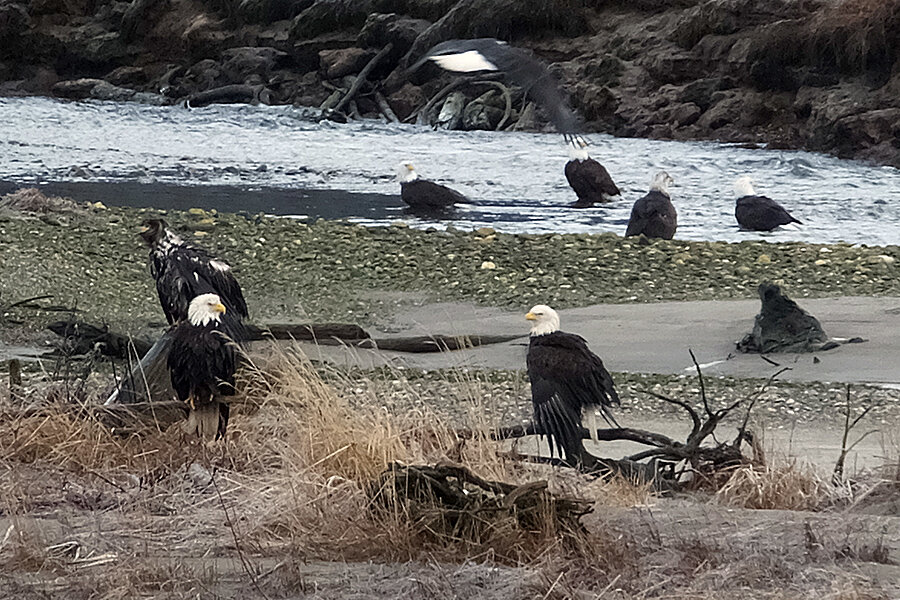Was bald eagle convocation poisoned? $10,000 reward offered for information.
Loading...
Nonprofits have banded together to offer $10,000 for information leading to a conviction in the possible murder of 13 bald eagles in Maryland, the largest number found dead in the state since the 1980s.
The national bird is "an American success story," the US Fish and Wildlife Service (FWS) says, removed from the list of officially endangered species in 2007, after 40 years of protection. But the distinctive eagles are still protected by federal law, and it is illegal to harm or sell the birds, their eggs, or their nests without a permit. Felony convictions can result in a $250,000 or two years' jail time.
Agents investigating on Maryland's Eastern Shore say the birds could have been poisoned, either intentionally or accidentally.
"It’s been 30 years since we’ve seen anything like this involving this many dead bald eagles," Maryland Natural Resources Police spokeswoman Candy Thomson told the Washington Post. "Three mature eagles, the ones we all love that look like the national bird, are gone."
The other ten eagles in the "convocation," as groups of the birds are called, were adolescents. Bald eagles get their trademark white cap when they reach four or five years of age.
Bob Edgell discovered the first few birds on his 114-acre farm near Federalsburg on Saturday morning. Hours later, Glenn Breeder was out looking for deer antlers on the same property when he spotted several more. Both men called the Maryland Natural Resources Police.
"I was amazed at what I was looking at. I never [saw] one up that close, dead or alive," Mr. Breeder, who first thought they were turkeys, told a local NBC station.
Investigators, now including agents from the FWS, say the birds were probably not shot. They had no visible injuries, and no other dead animals were found on the property. One possibility is that the birds were poisoned, as happened to a group of eight found dead in the 1980s. The eagles may have preyed on poisoned rodents.
Mr. Edgell said he hasn't used dangerous chemicals on his farm. There's "no need to have anything like that, certainly no DDT, which has been banned for years," he told reporters.
The ban on DDT has been considered crucial to the eagles' recovery. Adults who ingested it produced thinner eggs that sometimes cracked before babies were ready to hatch, one of several reasons the population was down to just 417 nesting pairs in the 1960s. In 2007, when they were removed from the endangered species list, they'd bounced back to almost 9,800 recorded pairs, including about 1,100 in the Chesapeake region.
The birds, which mate for life, can live up to 30 years, and keep their nests year after year, some of which weigh as much as two tons, according to the FWS.
The Humane Society of the United States and the Humane Society Wildlife Land Trust are offering up to $5,000 for information about the eagles that leads to a conviction. A Baltimore County animal rehab center, the Phoenix Wildlife Center Inc., has offered $2,500, as have federal authorities. The public may contact Maryland's Natural Resources Police at 410-260-8888.
Meanwhile, the bodies will be sent to Oregon for testing.






